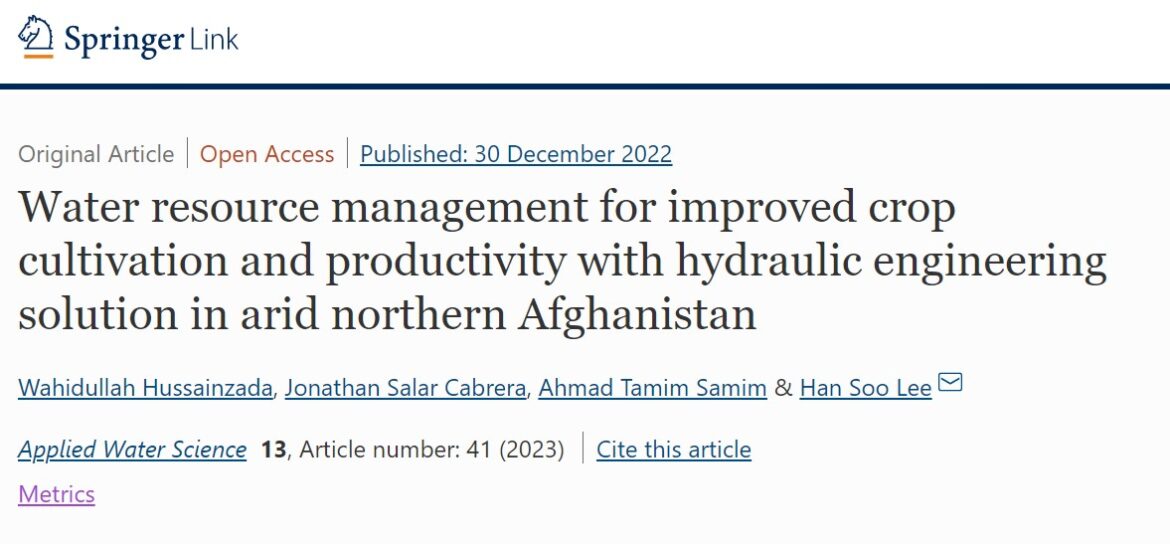Hussainzada W., Cabrera JS, Samim AT, Lee HS.* 2023. Water resource management for improved crop cultivation and productivity with hydraulic engineering solution in arid northern Afghanistan. Appl. Water Sci. 13(2), 41. open access
Abstract
This study is presenting a multidisciplinary approach for mitigations of water resources in the irrigation, water supply, energy, and flood protection using hydrological model coupled with multi-criteria decision analysis (MCDA). The study area is originated in the northern Afghanistan with serious water issues. Soil and Water Assessment Tool (SWAT) was adopted for the hydrological modelling. The model was calibrated and validated using monthly streamflow from 2010 to 2018. The current irrigation state of the watershed was revised based on the crop water requirements and land area to address water shortages. The investigations lead to an engineering-based solution (dam construction) to regulate and control the streamflow, especially during winter and flood season. Analytical hierarchy process (AHP) based on expert’s opinions were used to determine suitable dam site locations. Then, the dam was added to the SWAT model for dam’s impact assessment. The dam reservoir capacity (197,900,938 m3), dam storage area (748 ha), dam height (69 m), electricity generation (Ave = 25.4 MW, Min =16.23 MW, Max = 66.5 MW), and flood protection ability were estimated. Finally, cost–benefit analysis (CBA) was conducted to ensure the project feasibility. The CBA proves the feasibility and applicability of proposal. The surplus water can address the water shortages with an extra capacity of irrigating 17,180.5 ha or provision of water supply for the Mazar-i-Sharif city (the fourth biggest city in the Afghanistan). These findings can be used as guidance for the decision-makers in the BRB for the future development of water resource management strategies.


